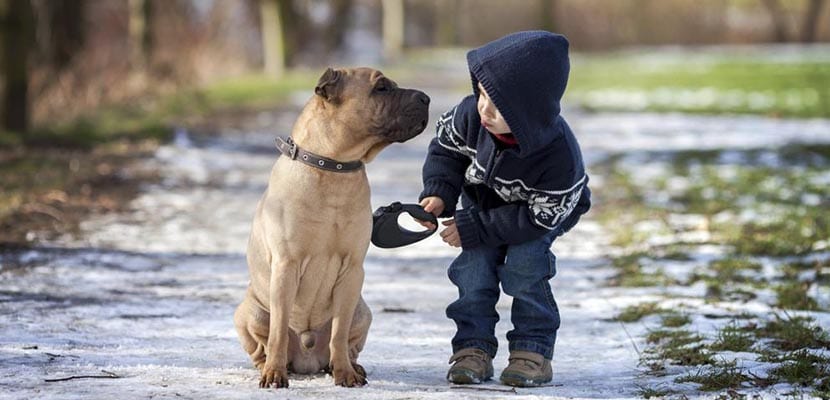
Those of us who have pets know that they are very beneficial for the whole family. They keep older people and children alike company. In a home with pets and children we must bear in mind that both must be educated in mutual respect to avoid problems. We will see why dog attacks happen to children and how to avoid them.
It is unusual for a dog bites or hurts a child, especially if we talk about the dog we have at home, but it is something that can happen. That is why we must take into account how these things happen and how we avoid them.
Why do dog attacks happen?
In general, dogs are not aggressive towards people but there may be cases in which they defend or bother. There are even dogs that are not balanced at all and that is why they react badly to many situations. In general, it is necessary to prevent a child from invading the dog's space without further ado, especially if the dog is not familiar with it. The problem with children is that we do not teach them to treat dogs from a young age and they still do not know the signals that a pet sends when it wants space. The noises, races, and invasiveness that some children become make dogs with less patience nervous, so they may be warned by scratching with their teeth.
Presentation of the dog and the child
The first step in avoiding conflict is for the child and the dog to introduce themselves. The boy must let the dog smell it and you shouldn't just touch it. We have to teach him that we must see if the dog wants us to pet him or move away, in which case we must leave him alone. These presentations are important, because they mark the beginning of trust between the two, which will define possible later conflicts.
Coexistence of the dog and the child

In the coexistence of the dog and the child, we must teach both to have mutual respect. Do not have bad gestures or let the child take things from the dog. In general, both know how to communicate very well with each other, with gestures and moods, something that adults find more difficult. But if the child has grown up without a pet, it may not be so natural for him to communicate with them. In this case we can teach him some of the dog's cues, of when he wants to play, when he is calm or when he is happy.
Ask before touching
Sometimes we have seen children who come to caress and even hug dogs that they see on the street. It is normal because they are attracted to pets. However, it is not okay for them to invade your space without warning, as pets can misunderstand such gestures. That is why from a young age we must teach them that they should ask the owners first if they can pet their pet, since there are dogs that do not tolerate it or that simply have traumas that do not allow them to react well to these gestures. This will ensure that children do not get unwanted bites and that dogs are not scared.
Pets from a young age
Ideally, children should always have pets from a young age. It is best to choose dogs that are patient, as children can overwhelm them with their attention. Older dogs can be a good option, although puppies also have the advantage that they are very playful and have fun with each other. If a child has a pet from a very young age know how to communicate with her and other pets because you will have learned to read your body language and your signals and moods. So the best solution to this is to teach the respect and affection that you have to have towards a pet from a young age.